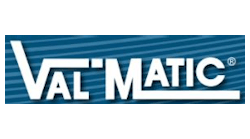An essential element in the design of water and wastewater pumping systems is the proper selection of the pump discharge check valve, the purpose of which is to automatically open to allow for forward flow and automatically return to the closed position to prevent reverse flow when the pump is not in operation. Another function that is often overlooked is the valve’s ability to minimize energy consumption. But just as important, the valve should protect the pumping system and piping from pressure surges caused by sudden closure. Every pump station designer has witnessed check valve slam, which is caused by the sudden stoppage of reverse flow through a closing check valve. To prevent slam, an automatic check valve must either close very quickly or close slowly by using oil dashpot devices. There are three general categories of check valves: lift check, swing check, and dashpot-assisted check valves.
Even when all of the various categories and types of check valves are understood, it is still difficult to make a rational decision about which type of check valve is best for a given application. Buying a check valve is similar to buying a car. There are many to choose from because every model is designed to meet different needs and the best car is not necessarily the fastest one. You may be looking for compactness, high performance, low cost, or advanced features; yet, just as there is a car that best meets your requirements, there will similarly be a check valve that best meets your requirements.
In order to match the best type of check valve with a given application, several operating parameters must be defined. These selection criteria may or may not be important for a given application, but they all play a role in the selection process. The first criteria are the initial costs. Valve purchase costs can vary widely and should also include installation costs. The initial cost of the check valve should consider its laying length and the laying length of required piping and the cost of installation and supports.
Second are maintenance costs. It is usually safe to say that the more moving parts in a valve, the greater the need for maintenance. The manufacturer’s recommended maintenance plan should be reviewed and figured into the lifetime cost of the valve.
Third are headloss and energy costs. The headloss from valves can be converted into an annual energy cost related to the electrical power needed by the pump to overcome the additional headloss from the valve. Some valves can cost far more in energy cost than their initial cost.
The next criteria is non-slam characteristics. It is essential to match the closing characteristic of the valve with the dynamics of the pumping system.
Last is fluid compatibility because line media is critical to check valve selection. The rule of thumb regarding check valve selection and suspended solids is the higher the concentration of suspended solids, the more care required when selecting a check valve.
Now that the types of check valves and their performance characteristics are better understood, a rational decision process can be applied to selecting check valves for specific applications that satisfy individual preferences and system parameters. There is no single check valve that is the best for all applications. Every installation will require the selection criteria to be given different weights, so it follows that there are applications suitable for all of the check valves available. WW
About the Author: Diane Meyer is the director of marketing for the Val-Matic Valve & Manufacturing Corporation. She is also a member of the Water and Wastewater Equipment Manufacturers Association (WWEMA) Board of Directors and serves on the Executive Committee as the treasurer of the association. WWEMA is a non-profit trade association formed in 1908 to represent water and wastewater technology manufacturers and related service providers. For more information about WWEMA, visit www.wwema.org.




